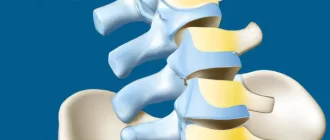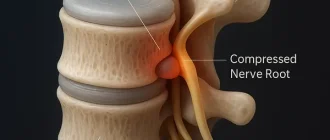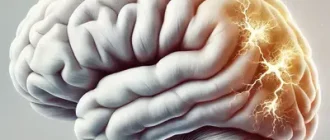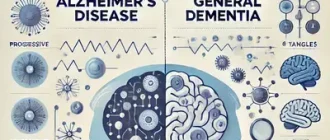Imagine sitting in a quiet room, expecting peace, and instead hearing a high-pitched whistle that no one else can. That’s tinnitus — a sound that doesn’t exist outside your head but feels as real as a mosquito buzzing next to your ear. It’s the phantom noise that millions of Americans live with daily, a constant background hum that can turn silence into a strange kind of chaos. Sometimes it’s a gentle hiss, other times a roaring ocean. And though it often starts as a small nuisance after a loud concert or too many hours with headphones, for many, it becomes an uninvited lifelong companion. But modern medicine has begun to decode this mysterious condition, offering new hope where there once was only ringing.
What Exactly Is “Noise in the Head”?
Tinnitus is not a disease itself but rather a symptom — a sign that something in the auditory system, from the outer ear to the brain’s auditory cortex, isn’t functioning properly. For some, it sounds like a steady tone; for others, it’s a pulsating beat or even a clicking rhythm. The American Tinnitus Association estimates that around 25 million adults in the U.S. experience tinnitus for at least five minutes in the past year. Globally, that number climbs past 700 million.
There are two main types:
- Subjective tinnitus — the kind only you can hear (most common).
- Objective tinnitus — a rare form that can be detected by a doctor using special instruments.
Both can range from mildly annoying to severely disabling, depending on the underlying cause.
Main Causes of Tinnitus — From Loud Concerts to Hidden Health Issues
Tinnitus can be triggered by many different factors — from temporary exposure to loud sound to chronic illnesses that disrupt blood flow or nerve function. Below is a detailed and structured breakdown showing which causes are most common, which are critical, and which develop gradually over time.
🔊 Most Common and Direct Causes
These are the everyday culprits responsible for the majority of tinnitus cases (about 80–85%):
- Noise-Induced Hearing Loss: Long-term exposure to sounds over 85 dB — concerts, factory environments, power tools, or earbuds at full volume — damages the cochlea’s delicate hair cells. This is the single most frequent cause of tinnitus in both young and middle-aged adults.
- Age-Related Hearing Loss (Presbycusis): Natural degeneration of auditory cells after age 60 gradually alters how the brain processes sound, often resulting in a constant background hum.
- Earwax Blockage: Surprisingly common but easily reversible. Hardened wax prevents normal sound conduction, creating internal echo-like ringing.
- Middle Ear Infections or Fluid Accumulation: Temporary inflammation can distort vibration transmission, causing short-term tinnitus until treated.
⚠️ Critical or Urgent Causes (Require Medical Attention)
These causes can point to serious underlying conditions and need immediate professional evaluation:
- Pulsatile Tinnitus from Vascular Problems: Abnormal blood flow near the ear — due to carotid artery narrowing, aneurysms, or vascular tumors — creates rhythmic, heartbeat-like noise. Such cases demand vascular or neurological assessment.
- Acoustic Neuroma (Vestibular Schwannoma): A benign tumor on the auditory nerve that compresses hearing pathways. Early symptoms often start as one-sided tinnitus.
- Severe Hypertension: Elevated blood pressure may amplify vascular noise, especially when untreated.
- Head or Neck Trauma: Concussions or whiplash can disrupt auditory nerve pathways, sometimes causing persistent tinnitus.
⏳ Gradual or Long-Term Triggers
These factors don’t cause tinnitus overnight but gradually damage hearing or neural balance:
- Ototoxic Medications: Long-term or high-dose use of certain drugs — including aminoglycoside antibiotics, chemotherapy agents like cisplatin, loop diuretics, and high-dose aspirin — can impair inner ear cells. Doctors rate the risk between moderate and high depending on dosage.
- Chronic Stress and Fatigue: High cortisol levels affect auditory blood flow and brain processing, making tinnitus perception stronger.
- Poor Sleep or Nutritional Deficiencies: Lack of vitamin B12, magnesium, or zinc can subtly impact auditory nerve health.
- Continuous Low-Level Noise Exposure: Even seemingly harmless sounds (air conditioners, city traffic) can lead to “hidden hearing loss” over years of exposure.
☕ Lifestyle and Environmental Contributors
While not inherently dangerous, these factors can worsen existing tinnitus or make it more noticeable:
- Excess caffeine or stimulant use (increases sensitivity to auditory input)
- Emotional stress and anxiety (amplify brain awareness of internal noise)
- Poor posture or temporomandibular joint (TMJ) issues, which can alter ear canal pressure
💬 Expert Insight: According to Reyus Mammadli, medical consultant, “The pattern and duration of noise exposure matter most. A single loud concert can cause ringing that fades, but daily headphone overuse trains the brain to normalize tinnitus. Prevention, not panic, is the smart play.”
By understanding these categories, readers can easily identify whether their tinnitus stems from temporary strain, chronic exposure, or a potentially critical condition. The clearer the cause, the more precisely treatment can target it.
When to Worry: Symptoms That Need a Doctor’s Attention
Tinnitus can appear in many forms, but not all of them mean something serious. Recognizing which symptoms are core, which are secondary, and which signal danger helps a person make sense of what’s happening and when to see a doctor. Below is a breakdown designed for clarity and self-awareness.
🎧 Primary (Core) Symptoms of Tinnitus
These are the hallmark signs — they define tinnitus itself and are usually constant or frequently recurring:
- Persistent ringing, buzzing, or hissing — the classic tinnitus tone, often noticeable in quiet environments. If it lasts longer than a few days, it’s likely true tinnitus rather than a temporary reaction to noise.
- Perception of sound without external source — sounds seem to come from inside the ear or head, sometimes varying in pitch or intensity.
- Changes in perceived tone or rhythm — when the noise alternates between high and low frequencies or has a pulsing beat.
🩺 These core symptoms almost always point to tinnitus and shouldn’t be ignored if they persist beyond 48–72 hours.
⚠️ Associated (Secondary) Symptoms
These often accompany tinnitus but might result from its underlying cause rather than the tinnitus itself:
- Mild hearing loss or muffled perception — common in age-related or noise-induced cases. This pairing strongly suggests inner ear hair cell damage.
- Ear fullness or pressure — often linked to middle ear infections, wax blockage, or Eustachian tube dysfunction.
- Intermittent clicking or popping sounds — can be related to muscle spasms or jaw (TMJ) issues rather than pure tinnitus.
- Sensitivity to external sounds (hyperacusis) — heightened awareness or discomfort from normal noises.
💬 If tinnitus is accompanied by hearing changes or fullness, it’s typically an ear-conductive or sensorineural issue — a good reason to schedule an audiology exam.
🚨 Warning (Critical) Symptoms — Seek Medical Help Immediately
These symptoms can indicate serious underlying medical problems that require prompt attention:
- Pulsatile tinnitus — rhythmic sound matching your heartbeat. May point to vascular abnormalities or high blood pressure.
- Sudden hearing loss in one or both ears — can signal nerve damage or infection; emergency treatment within 48 hours offers the best recovery chance.
- Vertigo or imbalance — suggests inner ear or neurological involvement (e.g., Meniere’s disease, acoustic neuroma).
- Severe pain, pressure, or discharge from the ear — likely infection or eardrum rupture.
- Unilateral tinnitus (only one ear) — can indicate nerve compression or tumor.
🧠 Reyus Mammadli, medical consultant, notes: “If tinnitus changes with your heartbeat or appears suddenly on one side, don’t self-diagnose — it’s time for imaging and vascular evaluation.”
⏰ Occasional or Temporary Symptoms
Not all noise in the head is chronic tinnitus. Some short-lived experiences are common and self-limiting:
- Brief ringing after loud noise (concert, fireworks) — usually fades within 24 hours.
- Momentary high-pitched tone — normal spontaneous ear activity, harmless if infrequent.
- Noise after fatigue or stress — typically resolves with rest or hydration.
✅ Rule of thumb: If tinnitus lasts less than 24–48 hours and occurs after obvious noise exposure or exhaustion, it’s usually temporary. Persistent or worsening cases require medical assessment.
By distinguishing between these categories, readers can better interpret their own symptoms, identify red flags, and approach physicians with clear, informed questions — saving both time and anxiety.
How Doctors Diagnose Tinnitus: Tests, Scans, and New Tech
Diagnosing tinnitus is about finding the “why” behind the noise. Doctors combine ear exams, hearing tests, and imaging studies to pinpoint the problem’s source — whether in the ear canal, inner ear, or brain. Below is an overview of the most commonly used diagnostic methods.
| Diagnostic Method | Accuracy (1–10) | Average Cost (USD / EUR) |
|---|---|---|
| Otoscopy | 6/10 | $50–$100 / €45–€90 |
| Audiometry | 8/10 | $75–$200 / €70–€180 |
| MRI | 9/10 | $600–$1,200 / €550–€1,100 |
| CT Scan | 8/10 | $300–$700 / €275–€640 |
| Doppler Ultrasound | 7/10 | $150–$300 / €140–€275 |
Otoscopy
A simple, quick in-office check where a doctor uses a handheld lighted tool to look into the ear canal. It helps detect earwax buildup, infection, or visible eardrum damage. The process takes less than two minutes and feels like someone gently shining a small flashlight into your ear — completely painless.
Audiometry (Hearing Test)
You’ll sit in a soundproof booth wearing headphones and listen to tones or words at different pitches and volumes. You press a button whenever you hear a sound. This helps map out which frequencies you can or can’t detect — revealing early hearing loss patterns often linked to tinnitus. Results are ready instantly, and the entire test usually takes 15–20 minutes.
MRI (Magnetic Resonance Imaging)
MRI creates detailed images of the inner ear, auditory nerve, and brain structures. You lie flat inside a cylindrical scanner while the machine produces rhythmic tapping sounds (ear protection is provided). It’s painless but can be a bit noisy. The scan lasts about 30–40 minutes, and results are typically available within a few days.
CT Scan (Computed Tomography)
CT scans use X-rays to capture cross-sectional images of ear bones and nearby tissues. You’ll lie on a sliding table that moves through a donut-shaped scanner — quick, silent, and noninvasive. The whole procedure takes about 10 minutes. It’s ideal for detecting bone-related causes like otosclerosis.
Doppler Ultrasound
This test checks the blood flow in vessels near the ear and neck to identify possible vascular causes of pulsatile tinnitus. A gel is applied to the skin, and a small handheld probe glides over the area. It’s comfortable, noninvasive, and feels similar to a prenatal ultrasound. Results are usually ready the same day.
🧠 Reyus Mammadli, medical consultant, explains: “Modern imaging gives us near-complete visibility of what’s happening behind the ringing. Each test answers a different piece of the tinnitus puzzle — together they form the full picture.”
Modern Treatments That Actually Work
While there’s no universal cure, treatments can significantly reduce symptoms:
- Medications: Betahistine, melatonin, zinc supplements, and selected antidepressants.
- Sound therapy: Hearing aids or masking devices that neutralize tinnitus frequency.
- Neuromodulation: Advanced devices like Lenire use tongue stimulation paired with sound to rewire the brain’s auditory response.
- Cognitive Behavioral Therapy (CBT): Helps patients manage emotional reactions to tinnitus.
💬 Expert View: Reyus Mammadli, medical consultant, emphasizes: “Neuromodulation is rewriting how we treat tinnitus — shifting from masking noise to retraining the brain’s pathways.”
Real-Life Cases: How Americans Live With Tinnitus
Tinnitus affects people from all walks of life, not just those exposed to loud music. Below are three real-world stories from the United States that illustrate how the condition begins, evolves, and can be managed effectively.
Case 1: Construction Supervisor, 42, from Nevada
After years of supervising heavy machinery and site work, this man began to notice a faint humming sound every evening after his shift. At first, he brushed it off as exhaustion. Over time, the sound became constant, making it hard to sleep or focus on paperwork. Audiometry revealed mild hearing loss caused by chronic noise exposure. He switched to advanced noise-canceling headgear, began sound therapy sessions twice a week, and within three months, his tinnitus intensity dropped by nearly 50%. Today he continues regular monitoring, having learned that consistent protection and rest are his best allies.
Case 2: Office Accountant, 63, from Ohio
For more than a decade, this woman experienced a steady high-pitched ringing that interfered with her concentration during long work hours. Stress and caffeine worsened her symptoms. After a medical evaluation, she was diagnosed with age-related hearing loss combined with anxiety-induced tinnitus. Through cognitive behavioral therapy (CBT) and the use of discreet hearing aids that emitted soft background noise, she regained her focus and reported improved sleep and reduced anxiety. Her story shows how tinnitus can be managed effectively with emotional support and smart technology.
Case 3: Truck Driver, 48, from Florida
Long-haul driving exposed this man to constant engine vibration and road noise. When a rhythmic pulsing sound began in his right ear, he initially thought it was just the truck’s idle echoing in his head. Later, the sound followed him even off duty. A Doppler ultrasound identified high blood pressure affecting the arteries near his ear. After adjusting his medication and diet, the pulsating tinnitus faded dramatically. His doctor emphasized the importance of regular blood pressure checks for anyone with vascular-type tinnitus.
💬 These real-life cases demonstrate that tinnitus has many faces — but also many solutions. From workplace adjustments to therapy and medical treatment, each story underscores that taking the first diagnostic step is key to finding relief.
Prevention: How to Protect Your Hearing Before It’s Too Late
Tinnitus prevention isn’t about living in silence — it’s about understanding your sound environment and taking small, consistent steps to protect your ears. Most people underestimate how loud everyday life can be until the ringing begins.
🎚️ Understand Safe Sound Levels
The critical limit is around 85 decibels (dB) — the threshold where prolonged exposure can start damaging the inner ear. To put that into perspective:
- Normal conversation: 60 dB
- Heavy city traffic: 85 dB (risk zone begins)
- Motorcycle engine: 95–100 dB
- Ambulance siren (close range): 110–120 dB
- Rock concert or jet takeoff: 120–130 dB — immediate risk of damage
💡 If you need to raise your voice to talk to someone nearby, the environment is already too loud.
🧰 Practical Protection Strategies
For people whose jobs involve constant noise — such as construction, factory, or airport workers — complete avoidance isn’t possible. Instead:
- Use industrial-grade earplugs or earmuffs. They reduce sound intensity by 20–30 dB without blocking communication.
- Take “quiet breaks.” Just 10 minutes in a silent area every hour helps auditory nerves recover.
- Alternate noisy and quiet tasks during the day to reduce cumulative strain.
Truck drivers, mechanics, and aircraft technicians are particularly vulnerable. Even inside a closed cabin, engine and road noise can reach 90 dB, which over time can lead to hidden hearing loss.
🥦 Support Hearing Through Nutrition and Lifestyle
Healthy ears start from within. Nutrients such as vitamin B12, magnesium, and zinc help maintain nerve function and blood flow to the auditory system. Limiting caffeine and managing stress are equally important — high cortisol levels amplify the perception of tinnitus.
Stay hydrated, sleep enough, and watch your blood pressure — all small factors that together build strong hearing resilience.
📱 Use Technology to Your Advantage
Modern smartphone apps can measure ambient noise in real time. If the reading flashes red or exceeds 85 dB, it’s a signal to move back or cover your ears. Some smartwatches now alert wearers automatically when environmental noise becomes hazardous.
🩺 Reyus Mammadli, medical consultant, recommends: “Treat your hearing like your eyesight — you wouldn’t stare into the sun, so don’t stand unprotected in front of a jet engine. Awareness is your first layer of defense.”
By understanding what loudness truly means and making protective habits routine, anyone can dramatically reduce the risk of tinnitus — and preserve the gift of quiet for years to come.
Myths vs. Facts: What People Get Wrong About Tinnitus
| Myth | Fact |
|---|---|
| “Tinnitus means you’re going deaf.” | Many tinnitus sufferers have normal hearing. |
| “Nothing can be done.” | Multiple treatments can reduce symptoms dramatically. |
| “It only happens to old people.” | Increasingly common among young headphone users. |
Editorial Advice
Tinnitus may be invisible, but its effects are deeply personal — impacting sleep, focus, and peace of mind. The most effective strategy? Early evaluation and consistent management. Reyus Mammadli, medical consultant, advises: “Don’t wait for the noise to fade. Identify the cause early — your ears and brain will thank you.”
Keep a hearing diary, adopt quiet breaks during your day, and stay alert to changes. Silence, once lost, can often be rediscovered — with care, technology, and a bit of patience.
About the Author
Reyus Mammadli is the author of this health blog since 2008. With a background in medical and biotechnical devices, he has over 15 years of experience working with medical literature and expert guidelines from WHO, CDC, Mayo Clinic, and others. His goal is to present clear, accurate health information for everyday readers — not as a substitute for medical advice.








Buzz, ringing, whistling, squeaking, tinnitus-all these words describe a phenomenon known in the medical community as tinnitus. Rumble in the ears – auditory sensations that are not associated with external sound stimuli and are the result of the activity of the nervous system.
Ringing in the ears is quite common. More than a third of adults have experienced this at least once in their lives. According to foreign researchers, tinnitus is more common in men, people with obesity, diabetes, hypertension and anxiety disorders. The nervous tension that comes after a constant buzzing in the ears causes insomnia, irritability, impaired concentration and depression. Tinnitus can cause other symptoms: nausea, vomiting, headache, and dizziness.
The most common reason for the appearance of a hum in the ears is the weakening of hearing as a result of constant intense sound exposure
Such a strong source of noise that affects the work of the hearing organ is loud music, equipment in production and in agriculture (machines, chainsaws, tractors).
Among the possible causes of noise may be pathologies of ENT organs, inflammatory and congestive phenomena in the ear, diseases of the bone and joint apparatus of the head and neck, allergic reactions, foreign bodies.
Acoustic and barotrauma often lead to long-term ringing in the ears (for example, in an explosion)
The appearance of constant noise in one ear may indicate a lesion of the auditory nerve on the corresponding side caused by inflammation. Diseases that may cause tinnitus:
-diseases of the tumor nature in the nasopharynx, inner ear;
-osteochondrosis of the cervical spine;
-arthritis and arthrosis of the temporomandibular joint;
-vascular abnormalities of the brain;
-pathology of head and neck veins;
-stenosis (narrowing of the lumen) of the carotid and vertebral arteries;
-traumatic brain injuries;
-atherosclerosis;
If tinnitus occurs suddenly, persists for a long time and is accompanied by other symptoms (nausea, vomiting, dizziness, loss of consciousness), you should urgently seek medical help
First of all, you will need an examination by an otolaryngologist. It is necessary to inform the doctor of the alleged causes and circumstances of the beginning of the noise, tell about the self-help measures taken, because it is possible that the deterioration occurred from improper actions. After the interview, the doctor will examine the ears, assess the acuity of hearing and the intensity of symptoms.
If the appearance of tinnitus is not associated with damage to the ENT organs, you may need to be examined by other specialists. Depending on the accompanying symptoms, the patient will be referred to a therapist or pediatrician, dentist, cardiologist, endocrinologist, neurologist, surgeon, or psychiatrist
If there is a sulfur plug or foreign body, the doctor removes them from the ear. Inflammatory diseases of the ear and nasopharynx require the appointment of antibacterial drugs and monitoring of therapy by a specialist. If the treatment starts late and there are complications, surgery may be required.
If the cause of the hum in the ears is a pathology of the cardiovascular system, then a comprehensive approach is required to treat the underlying disease under the mandatory supervision of the attending doctor.
If there is a buzz in the ears while taking medications, you need to replace the medication or adjust the dose